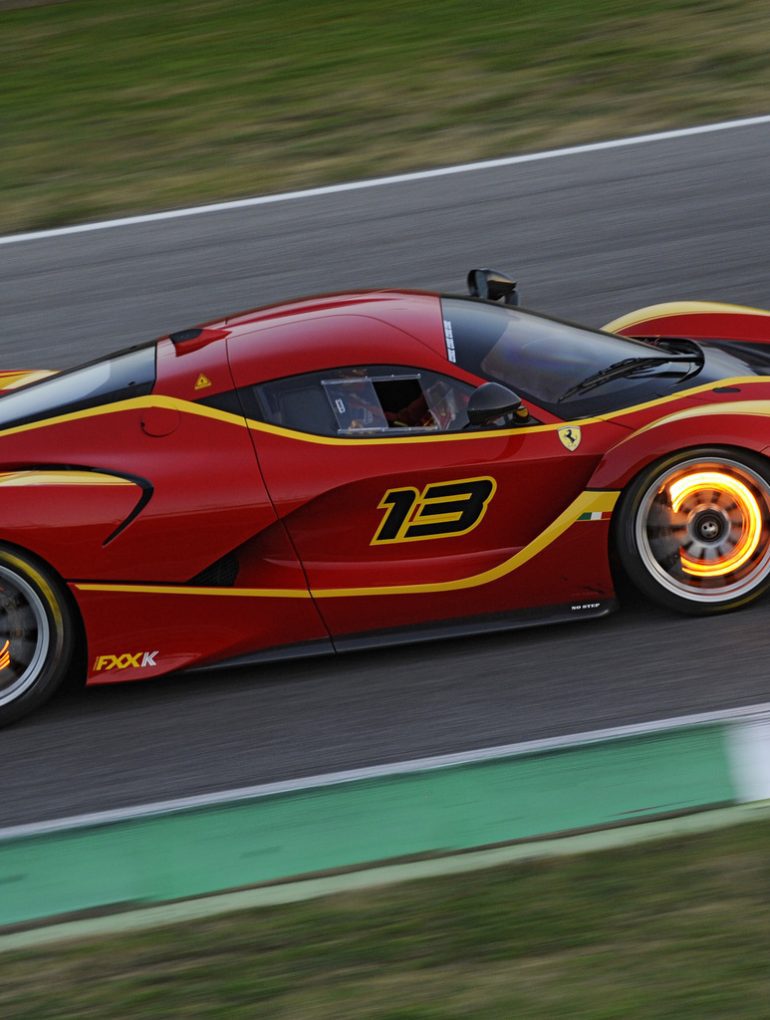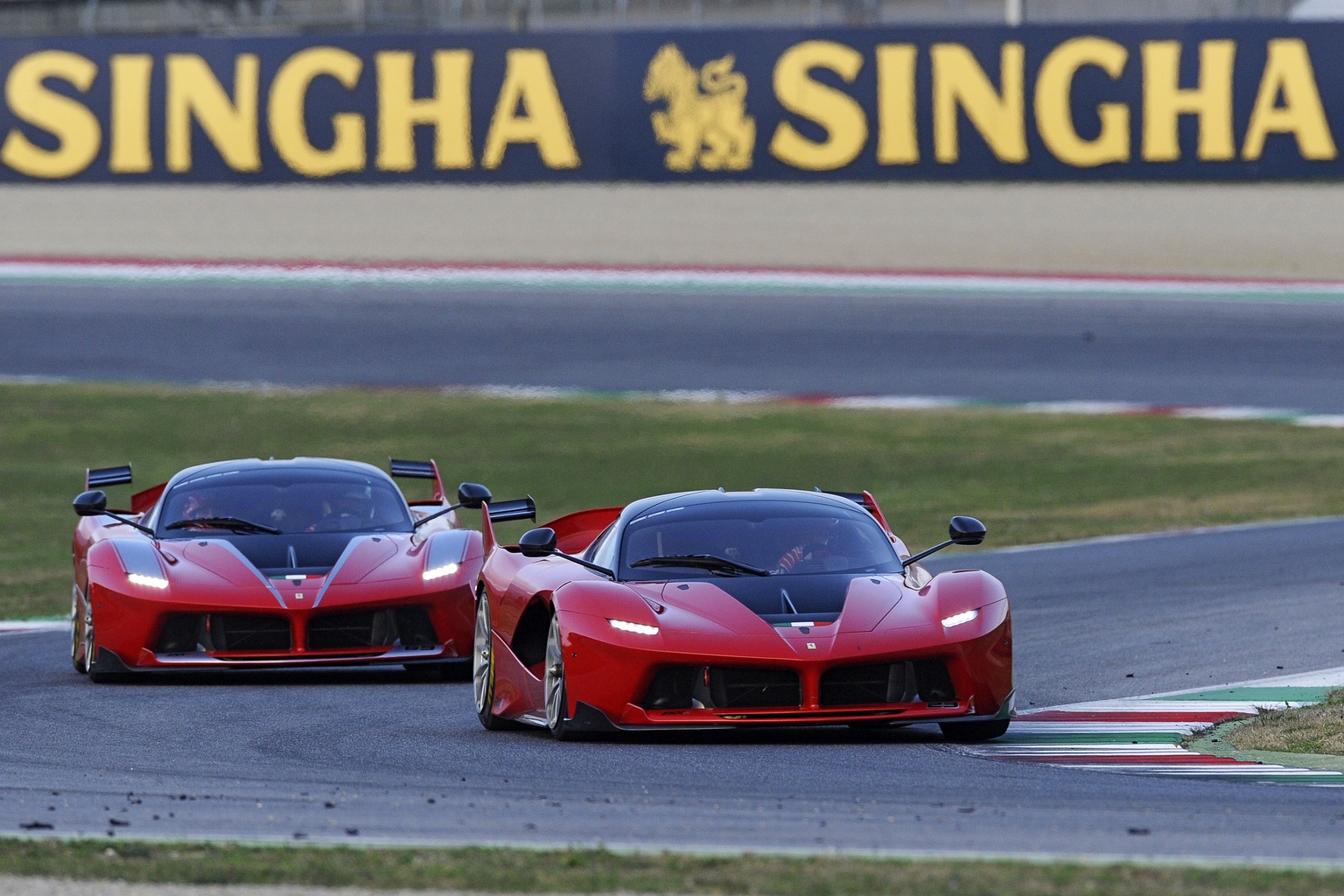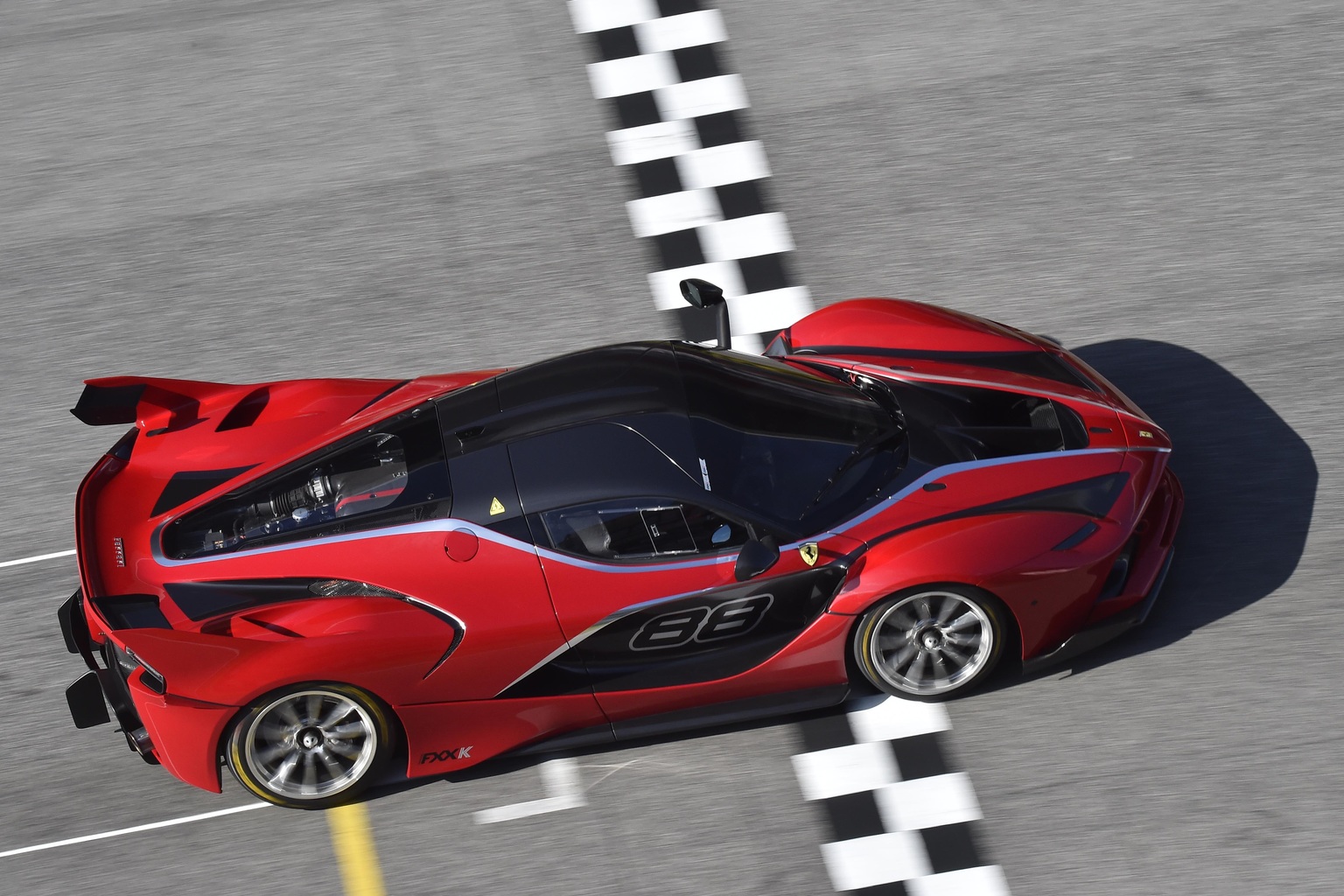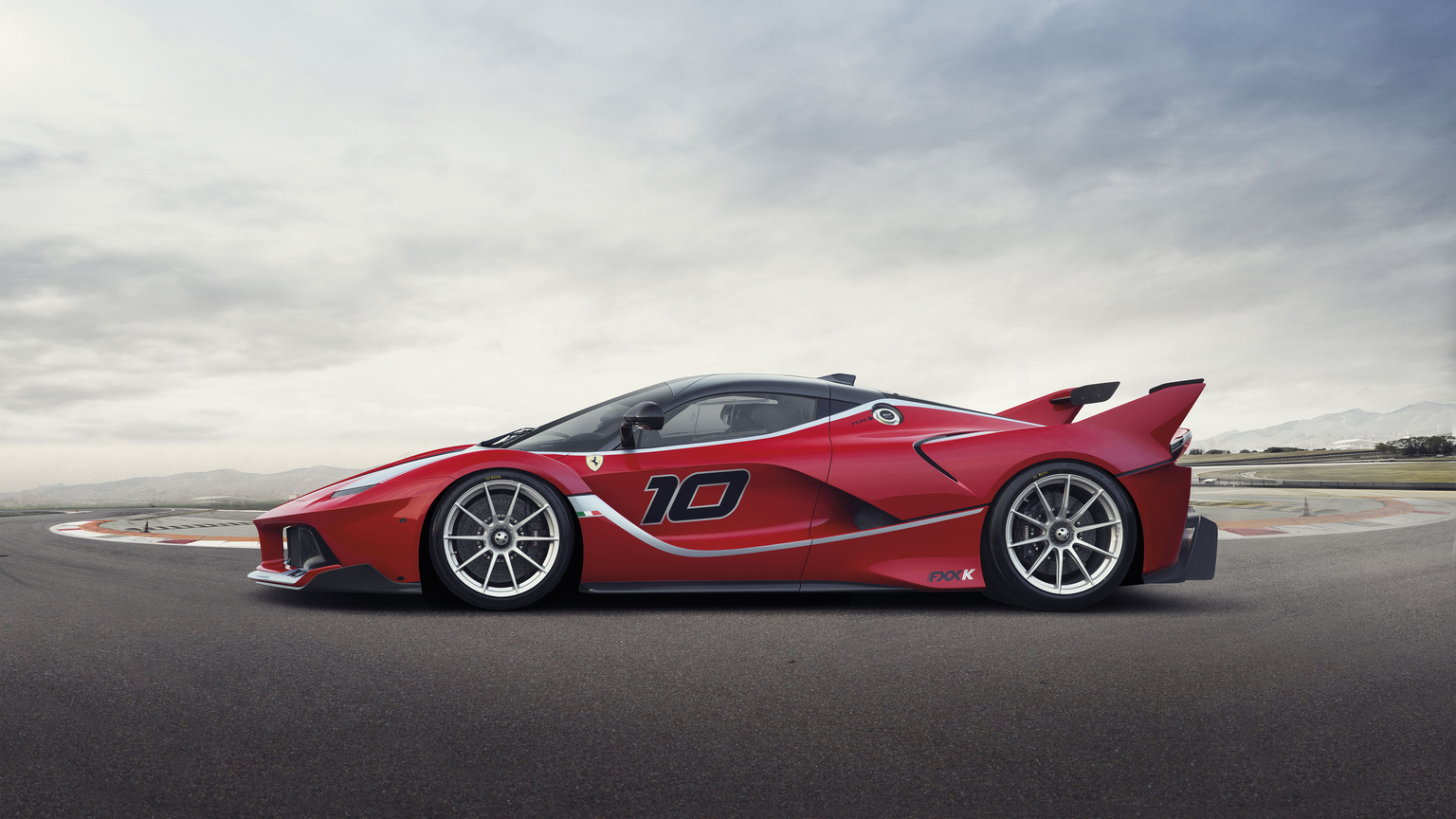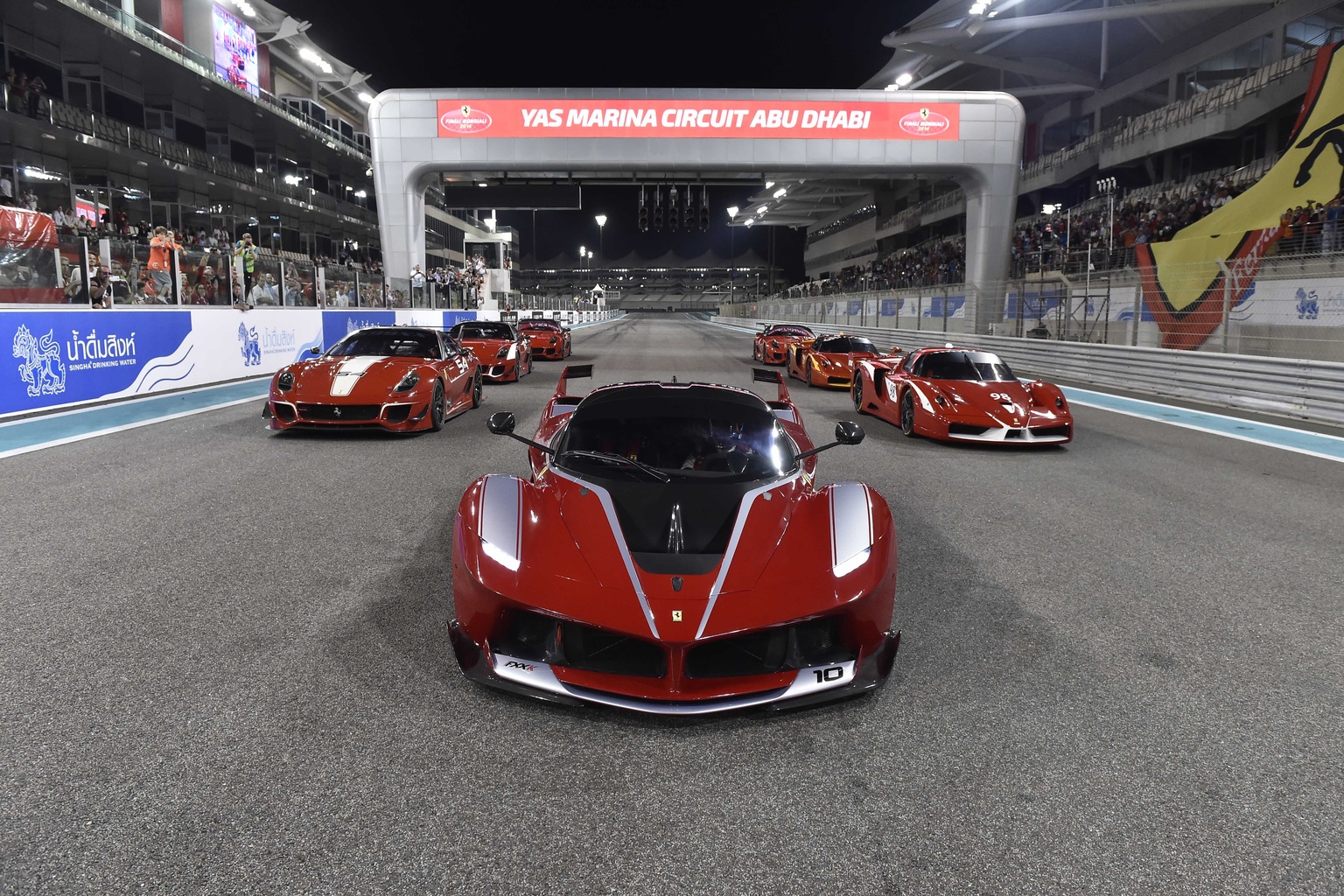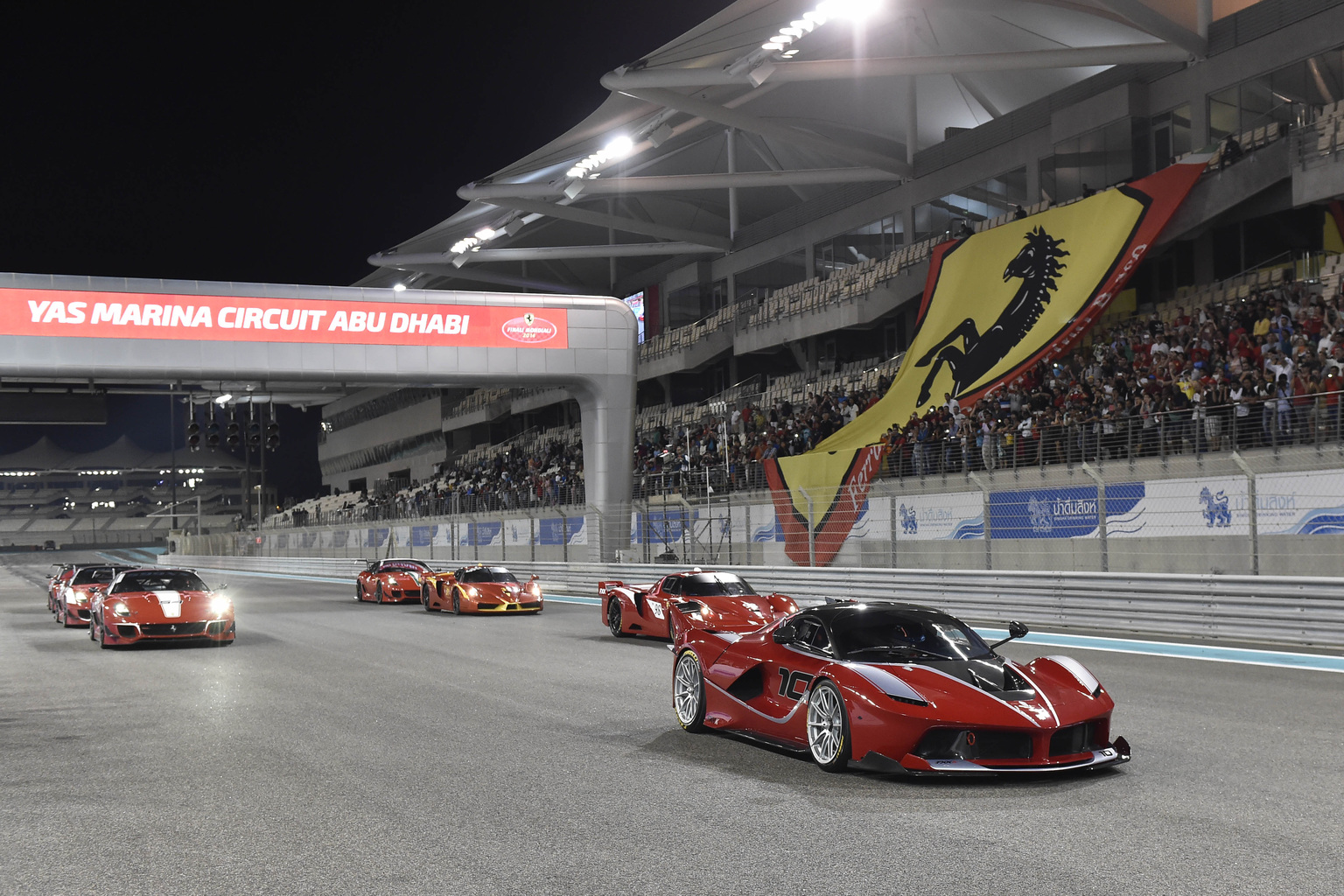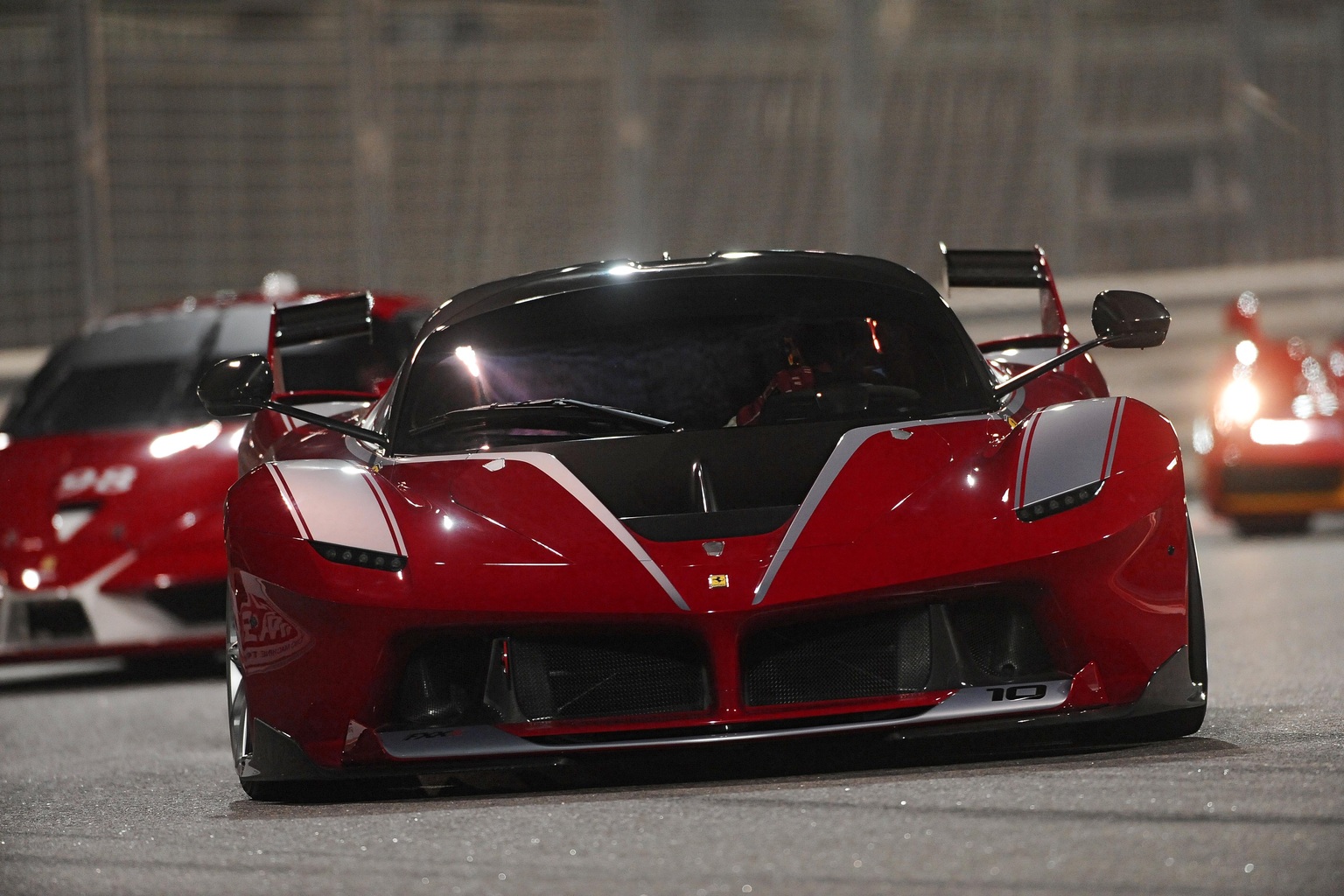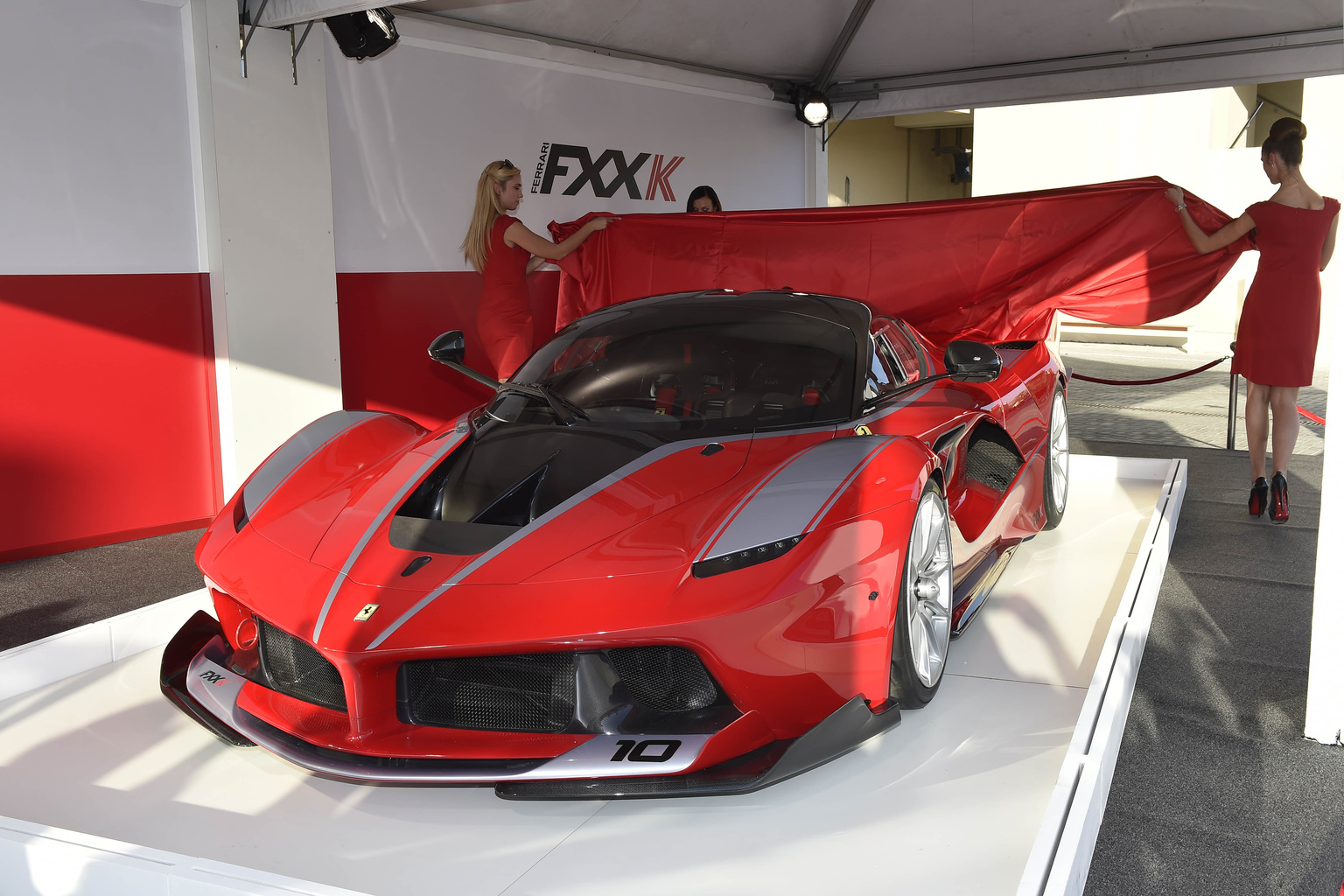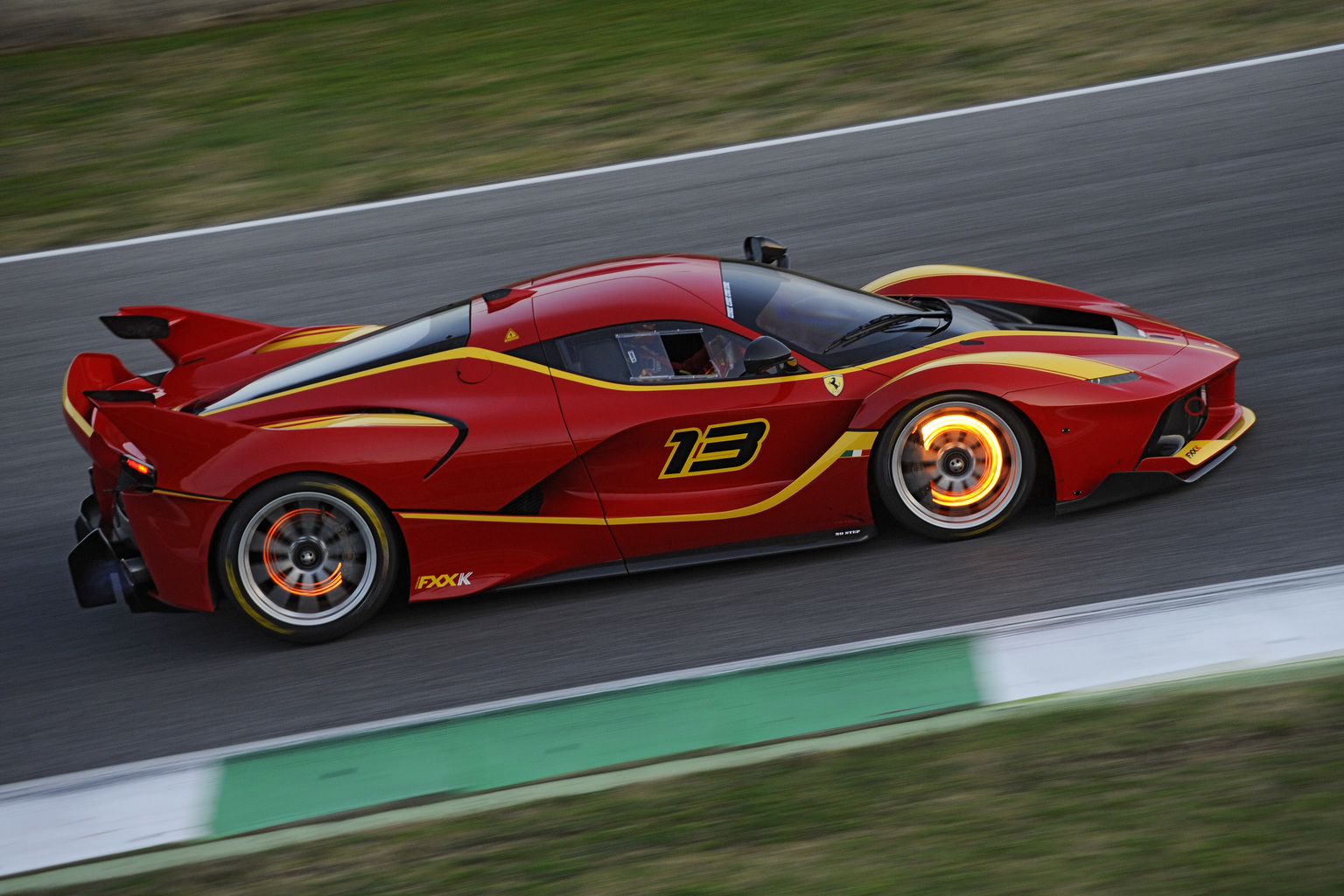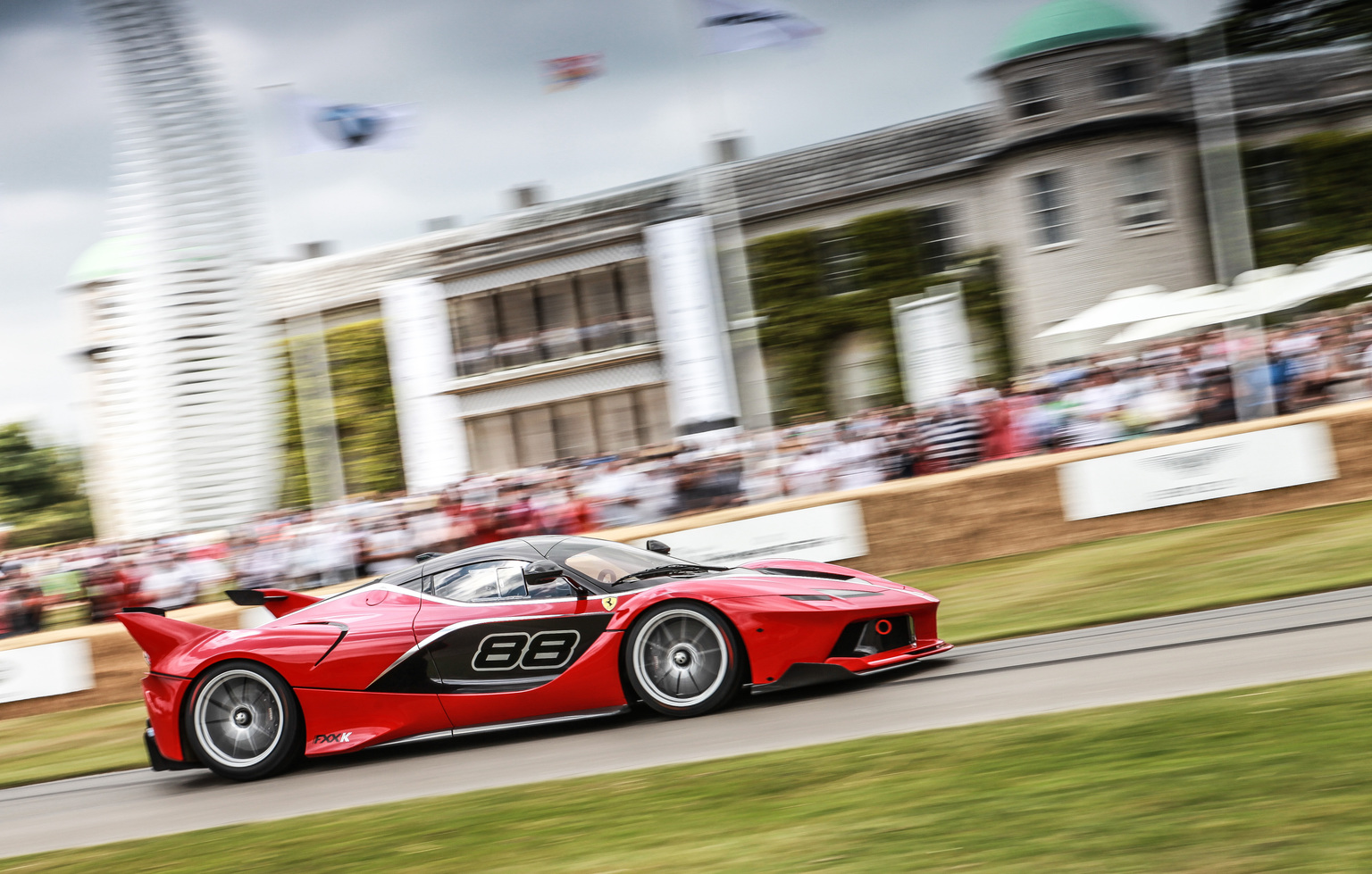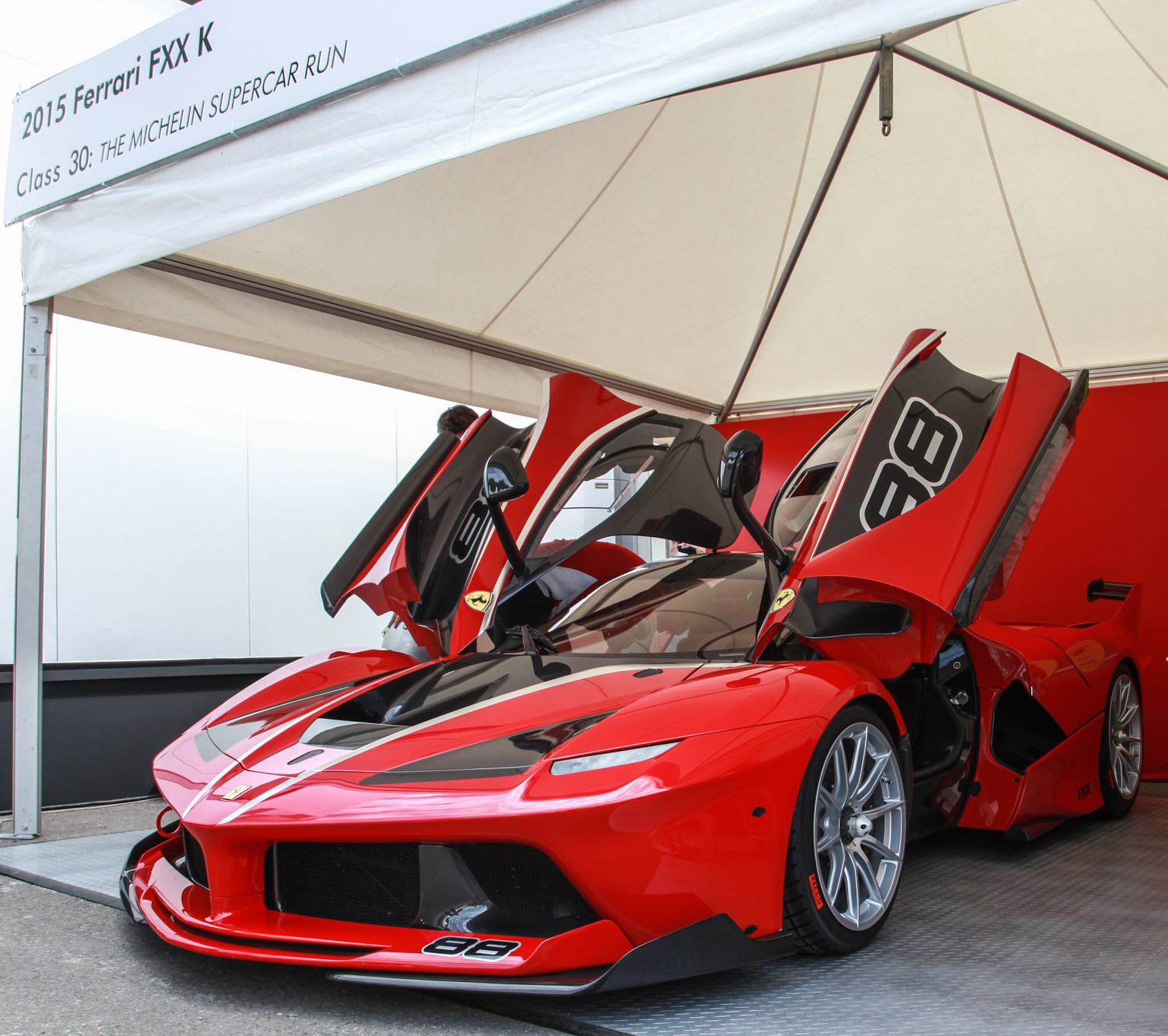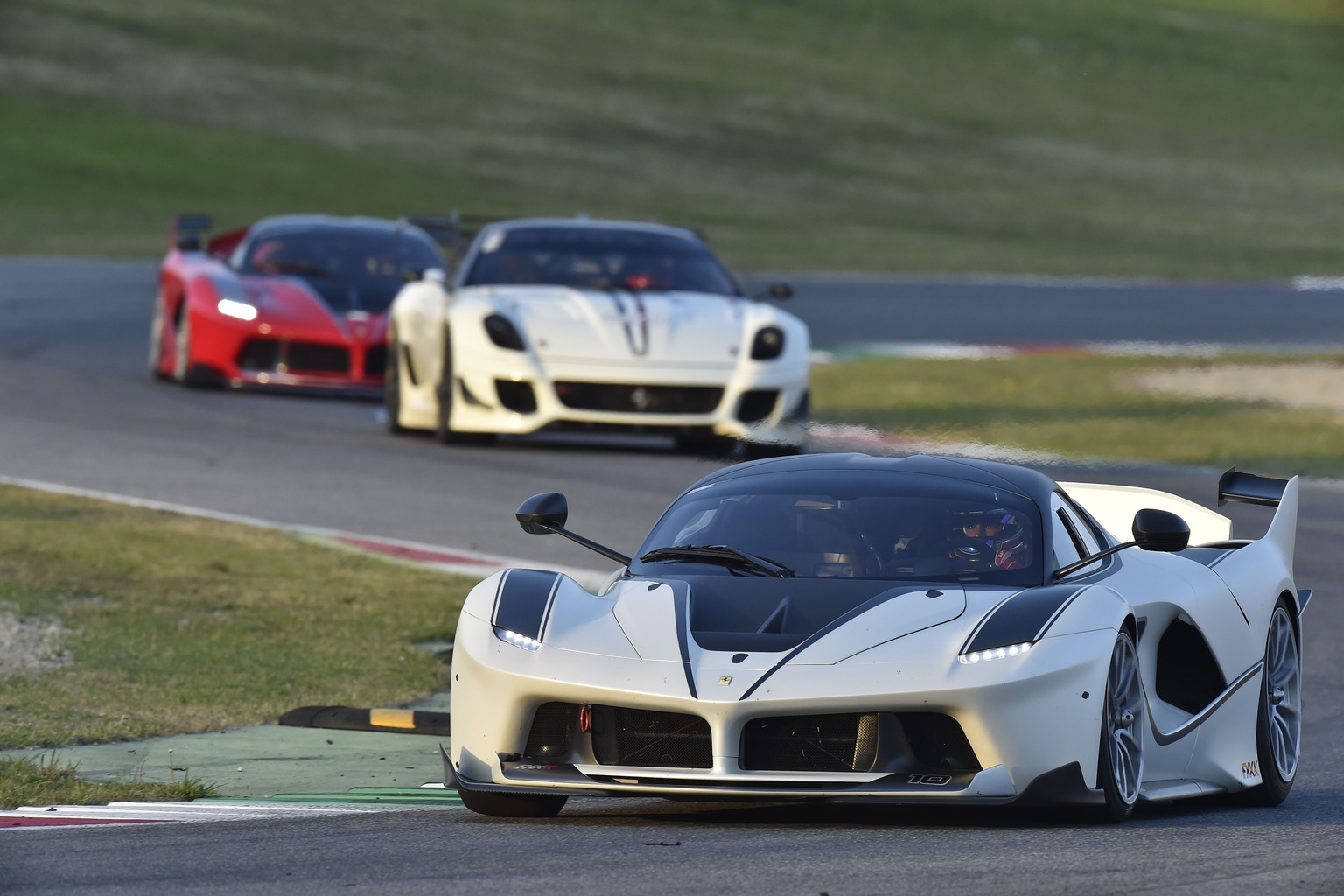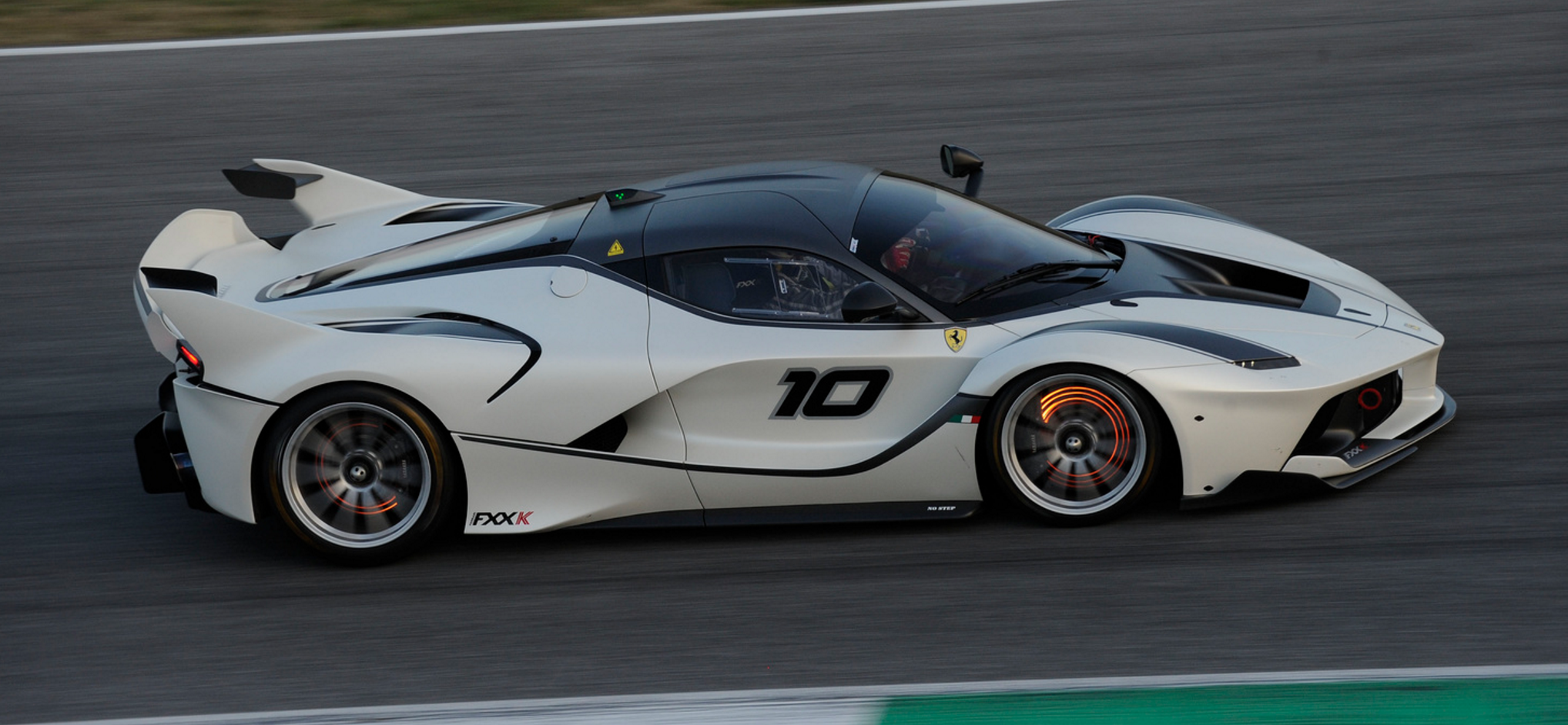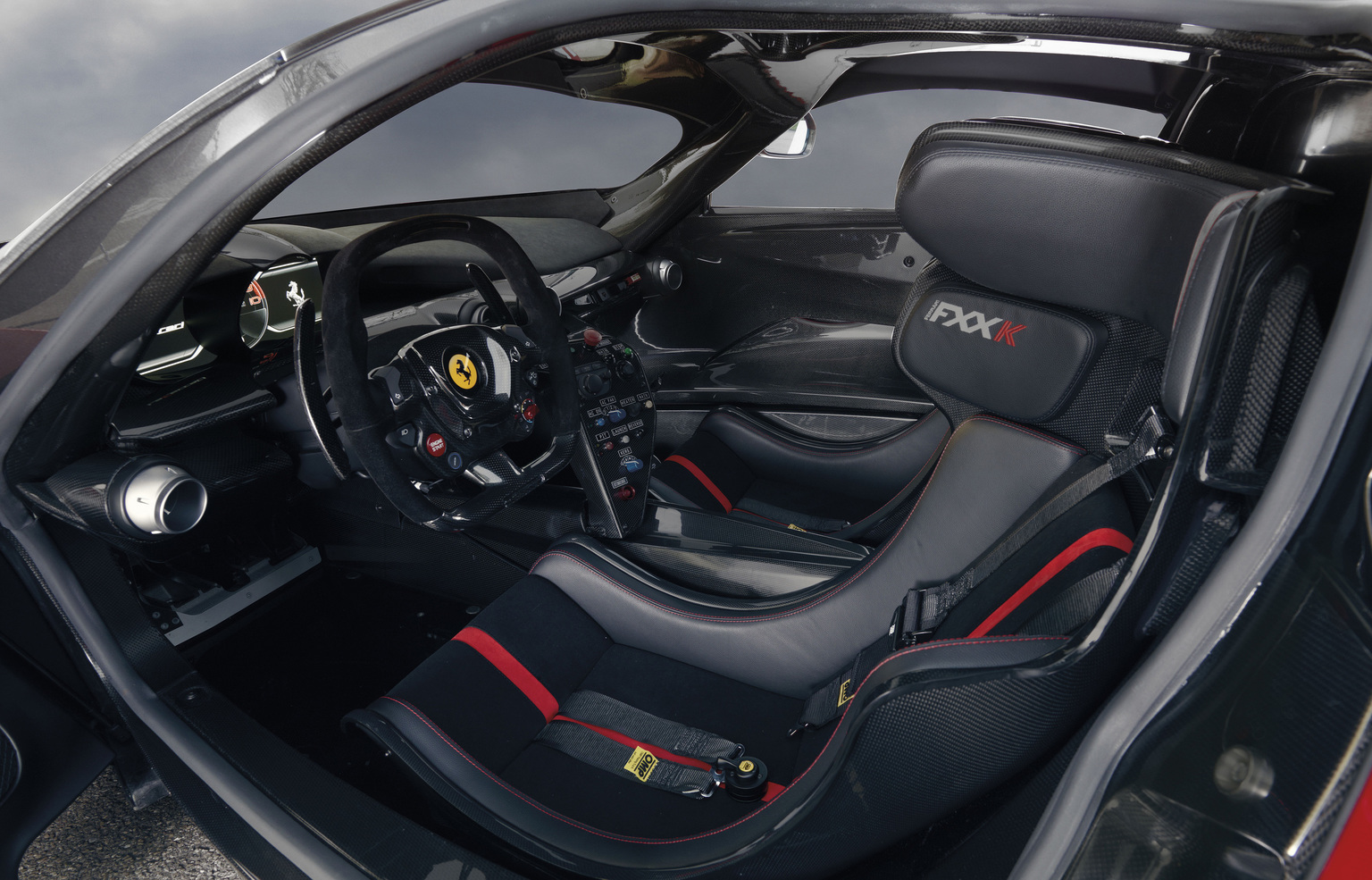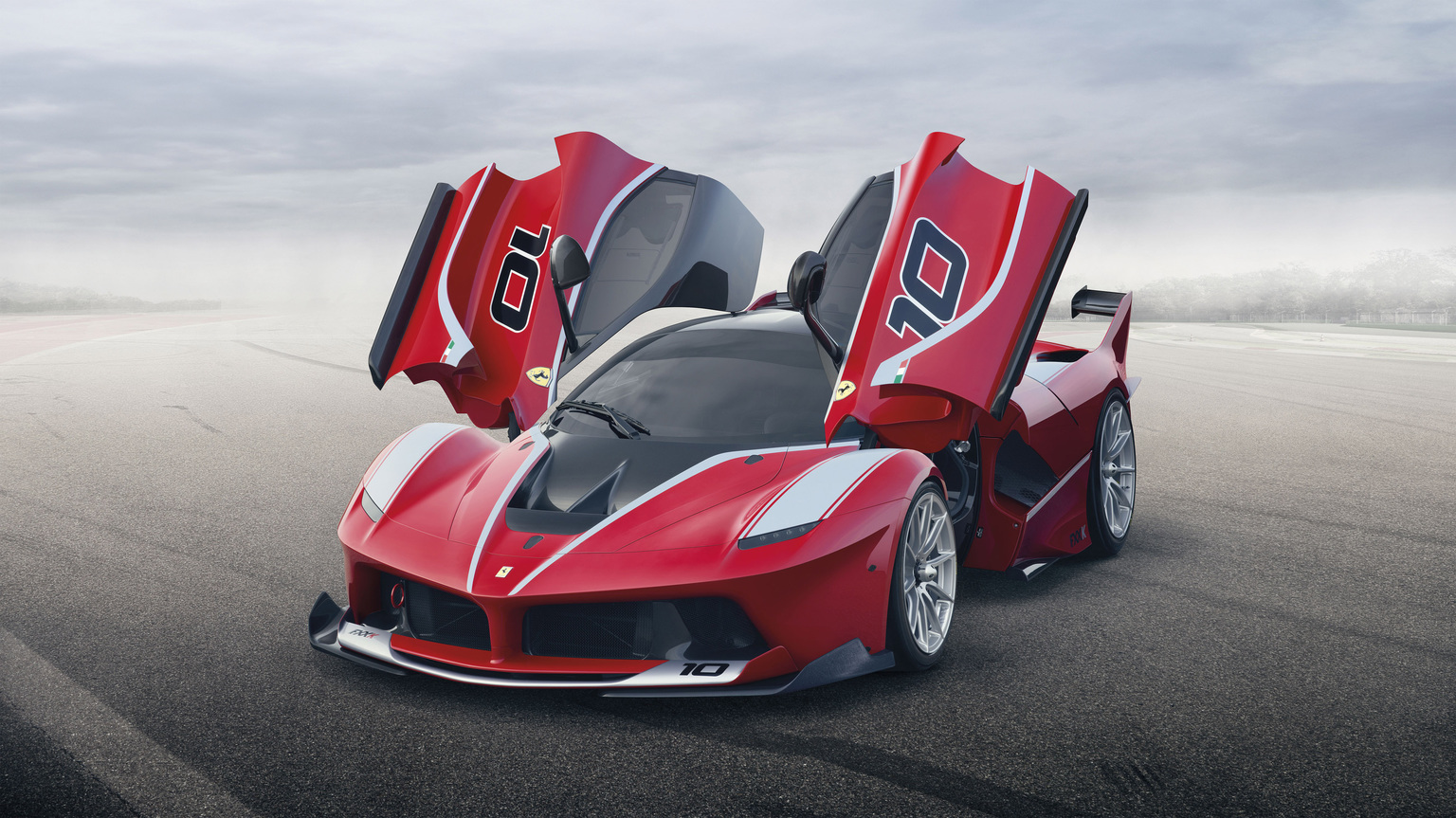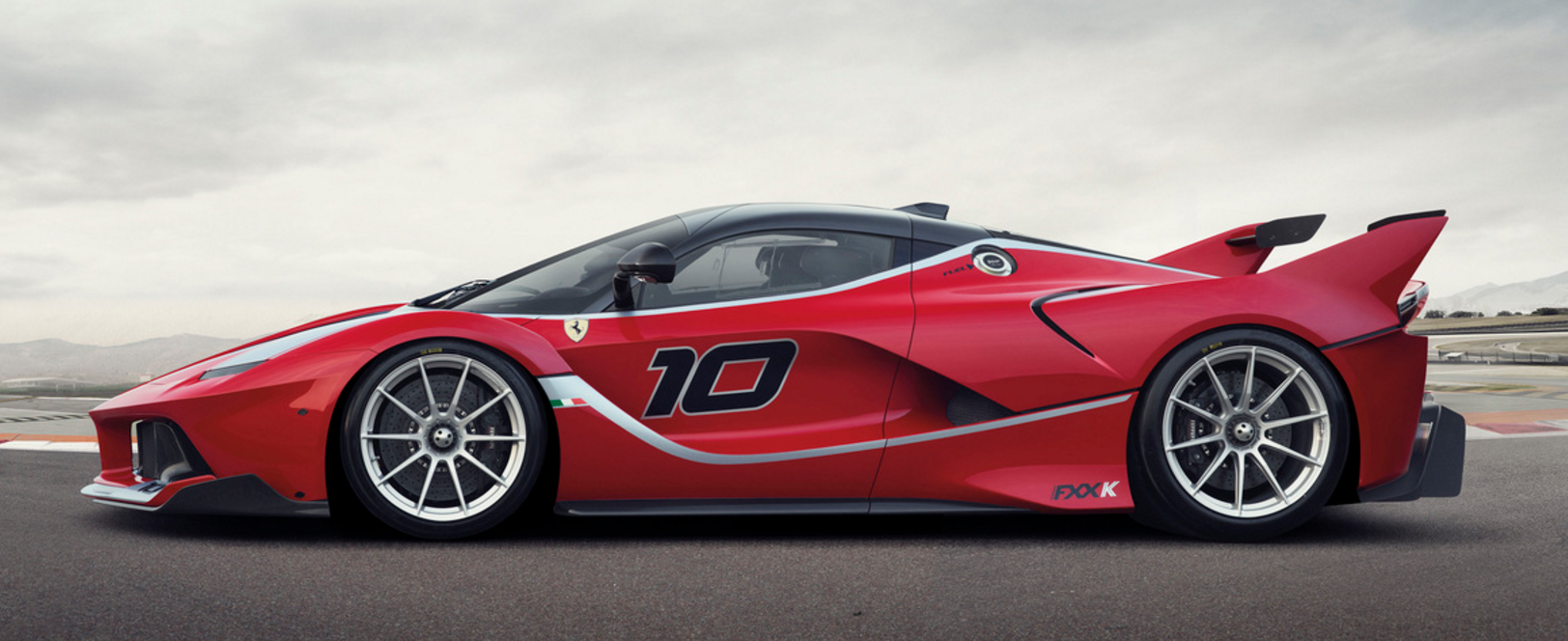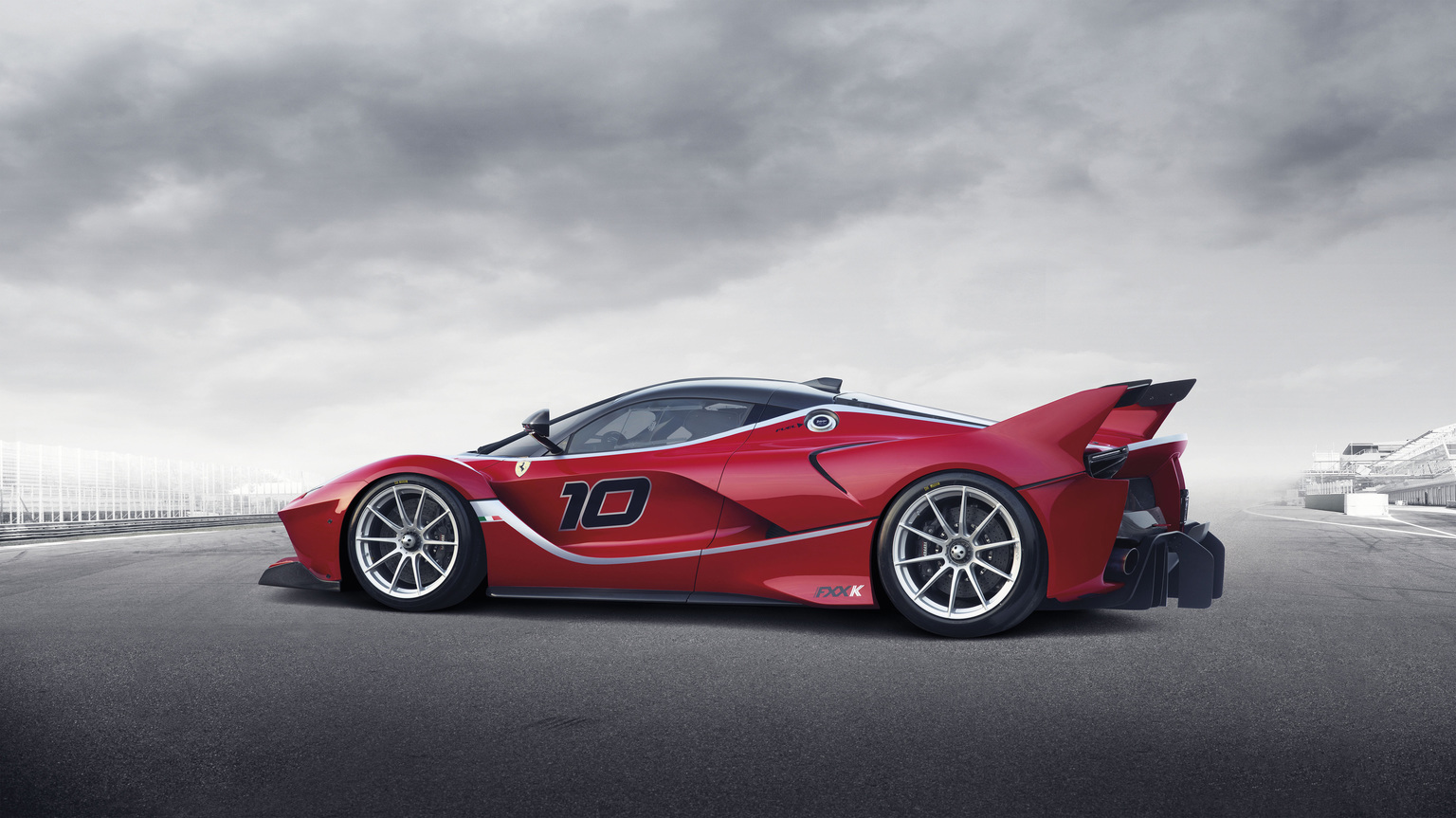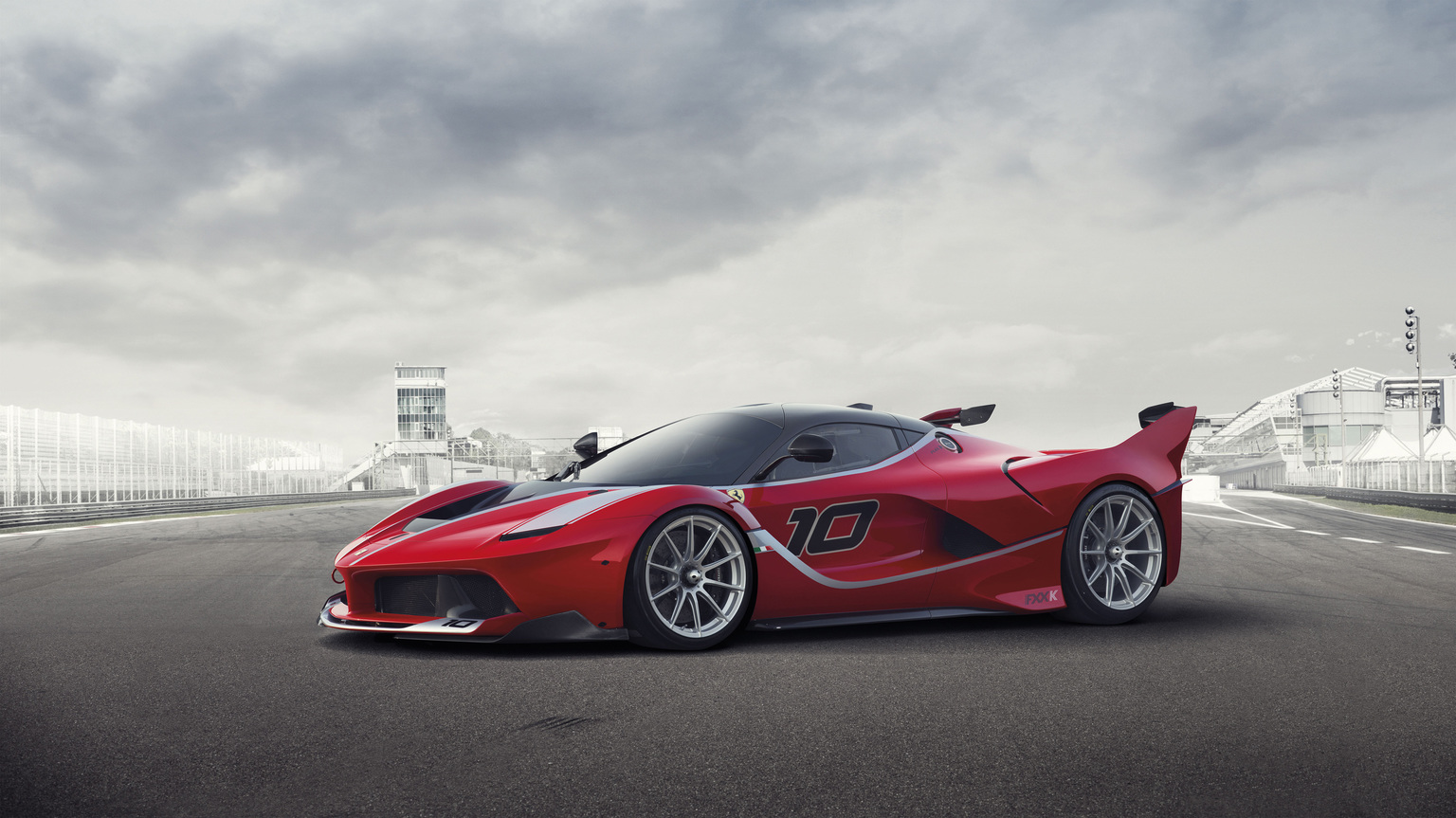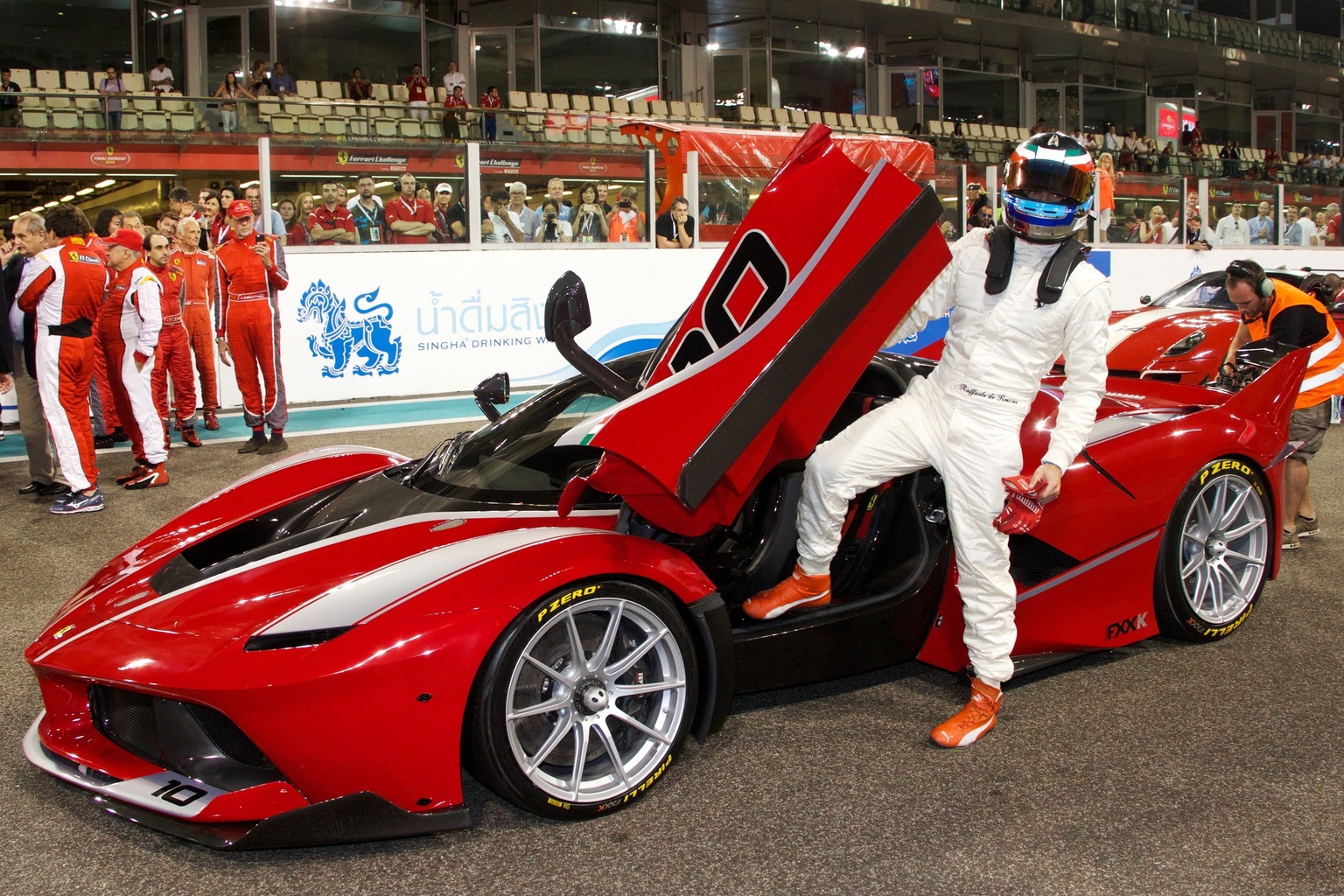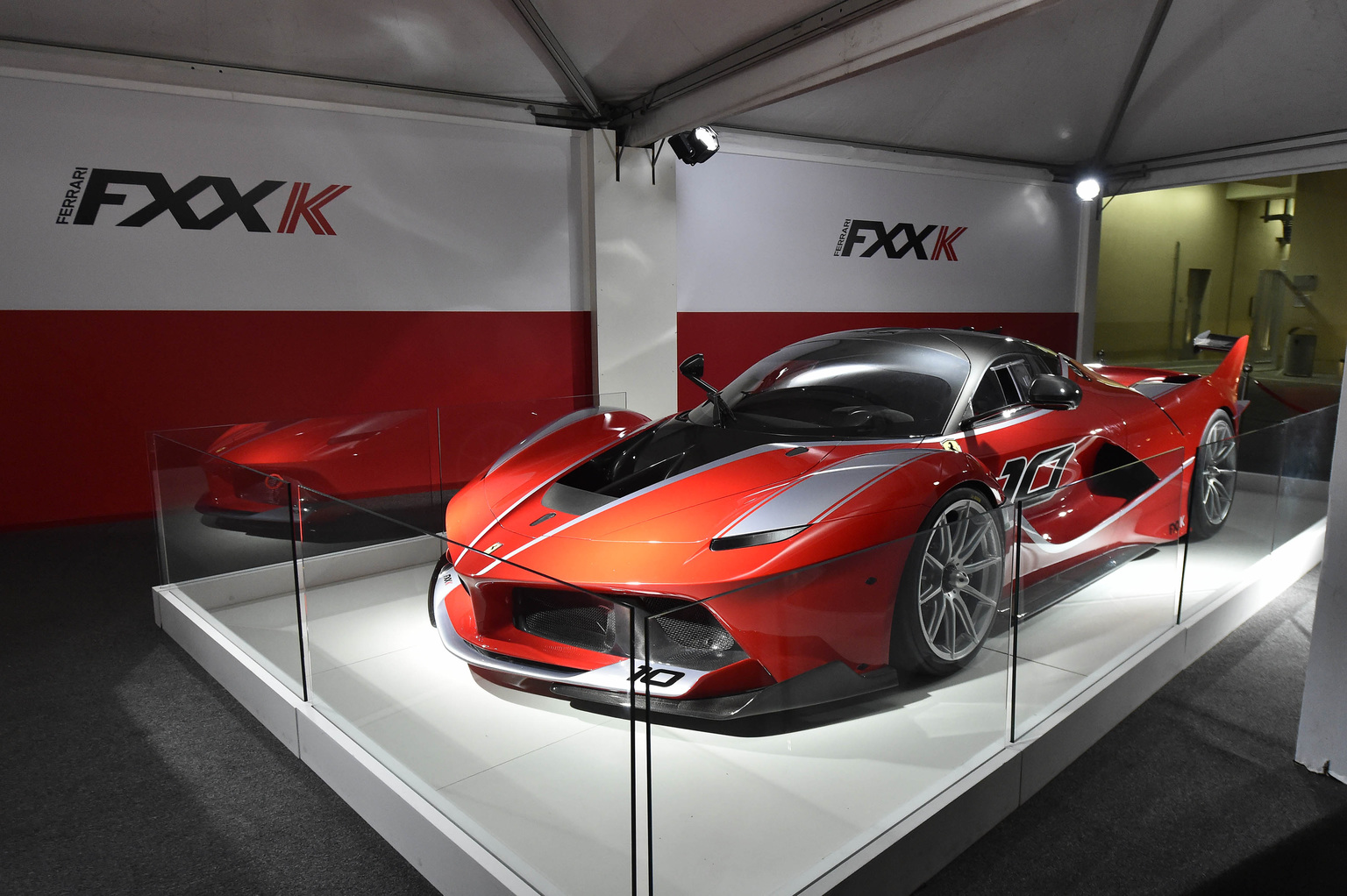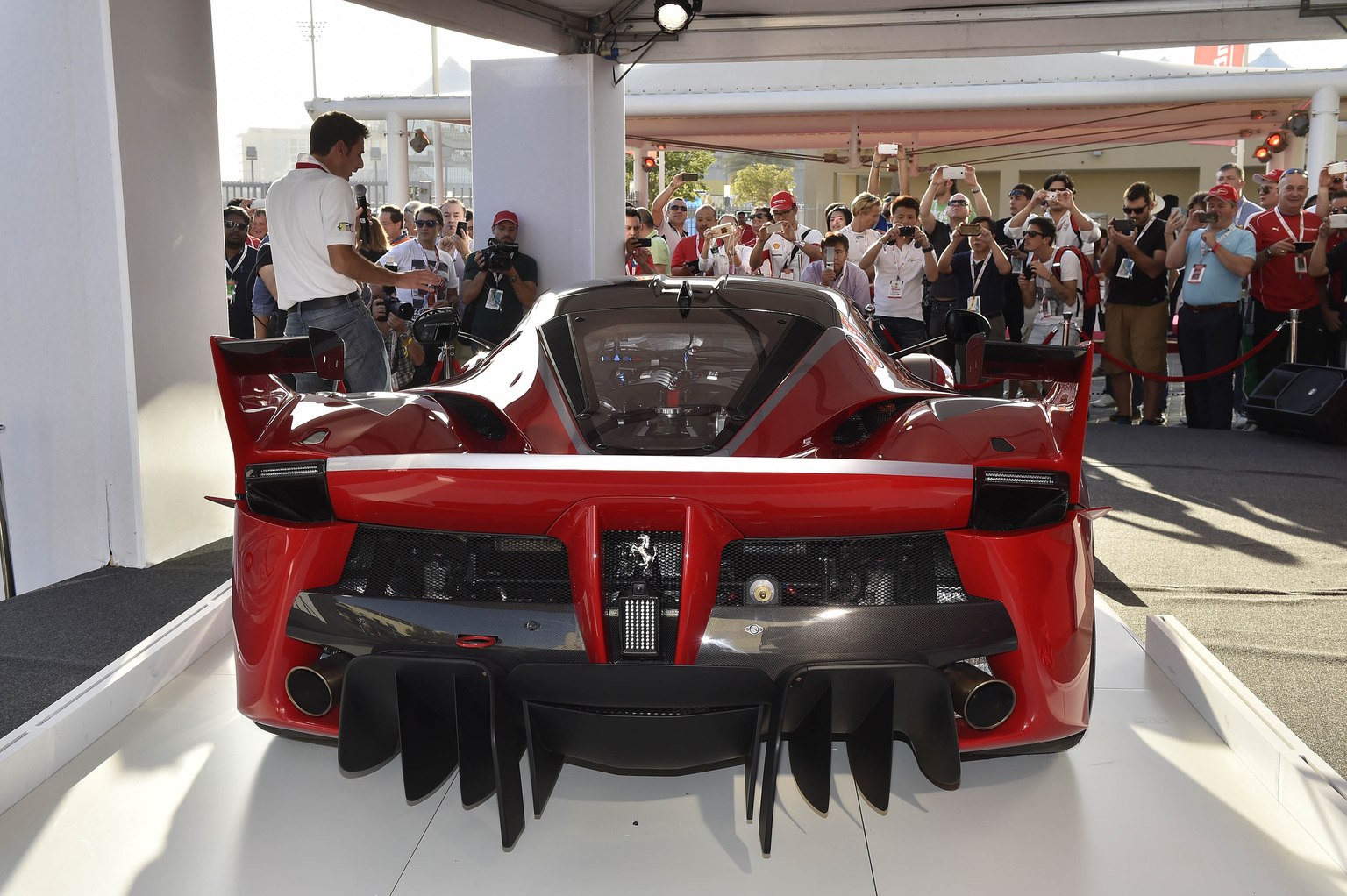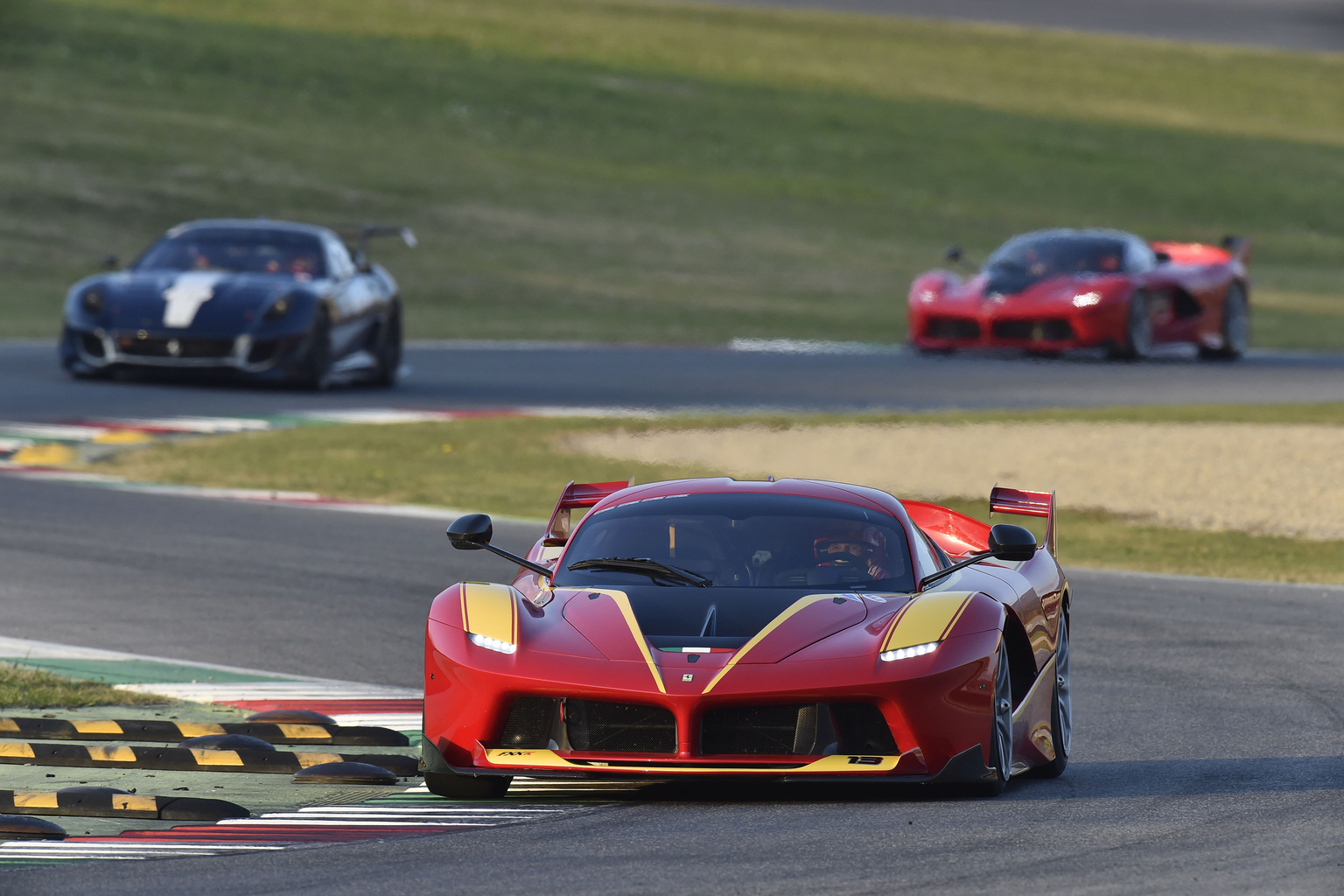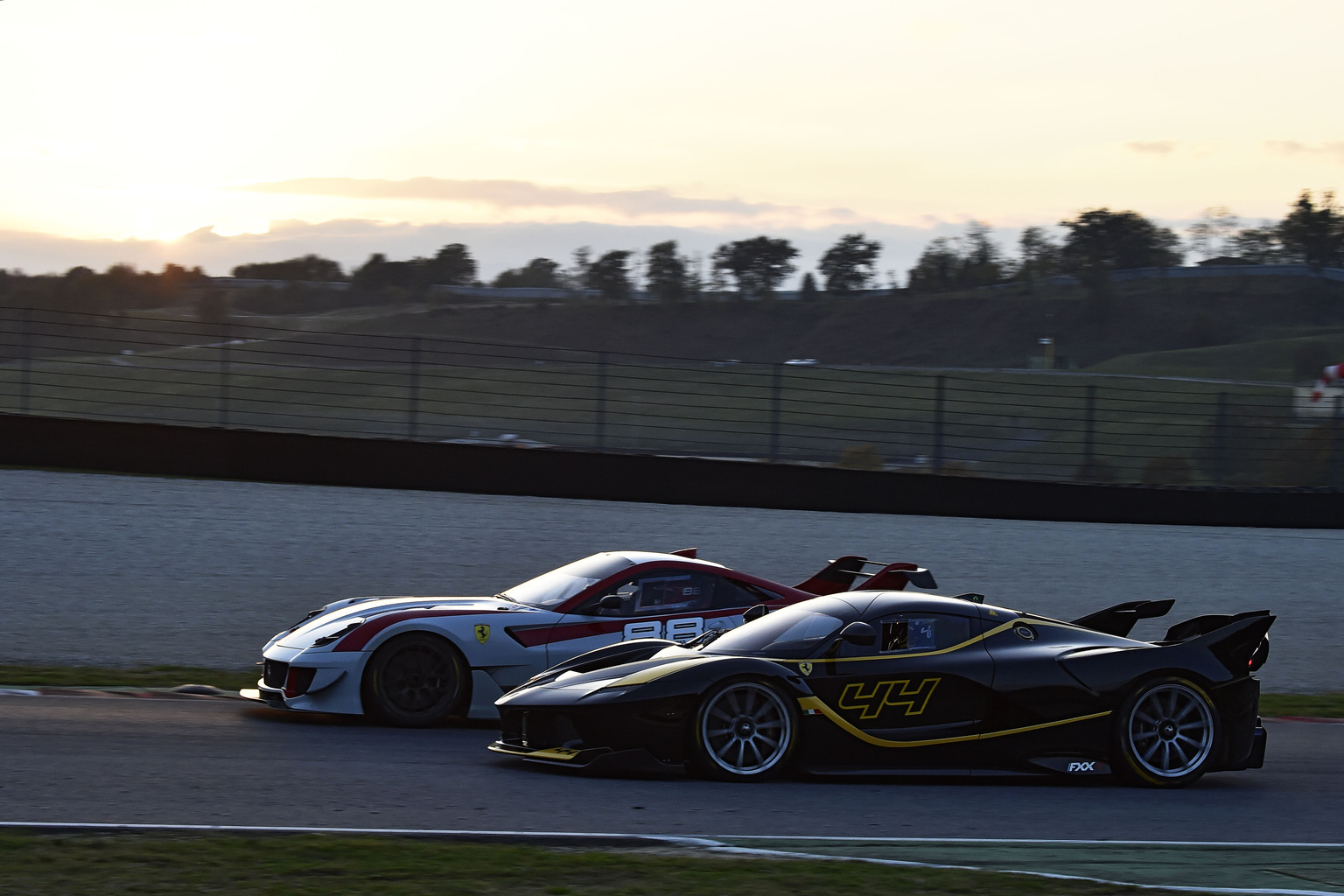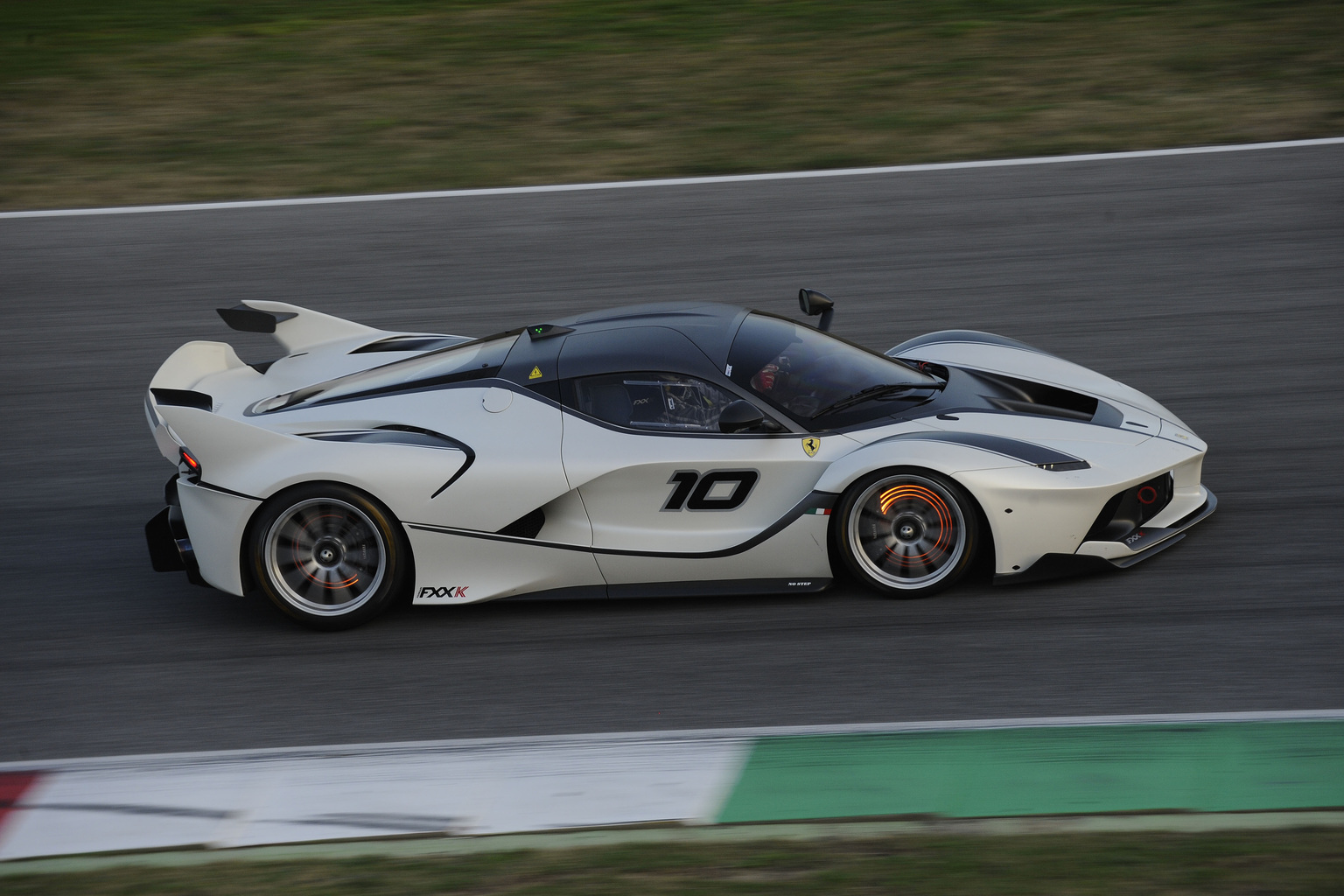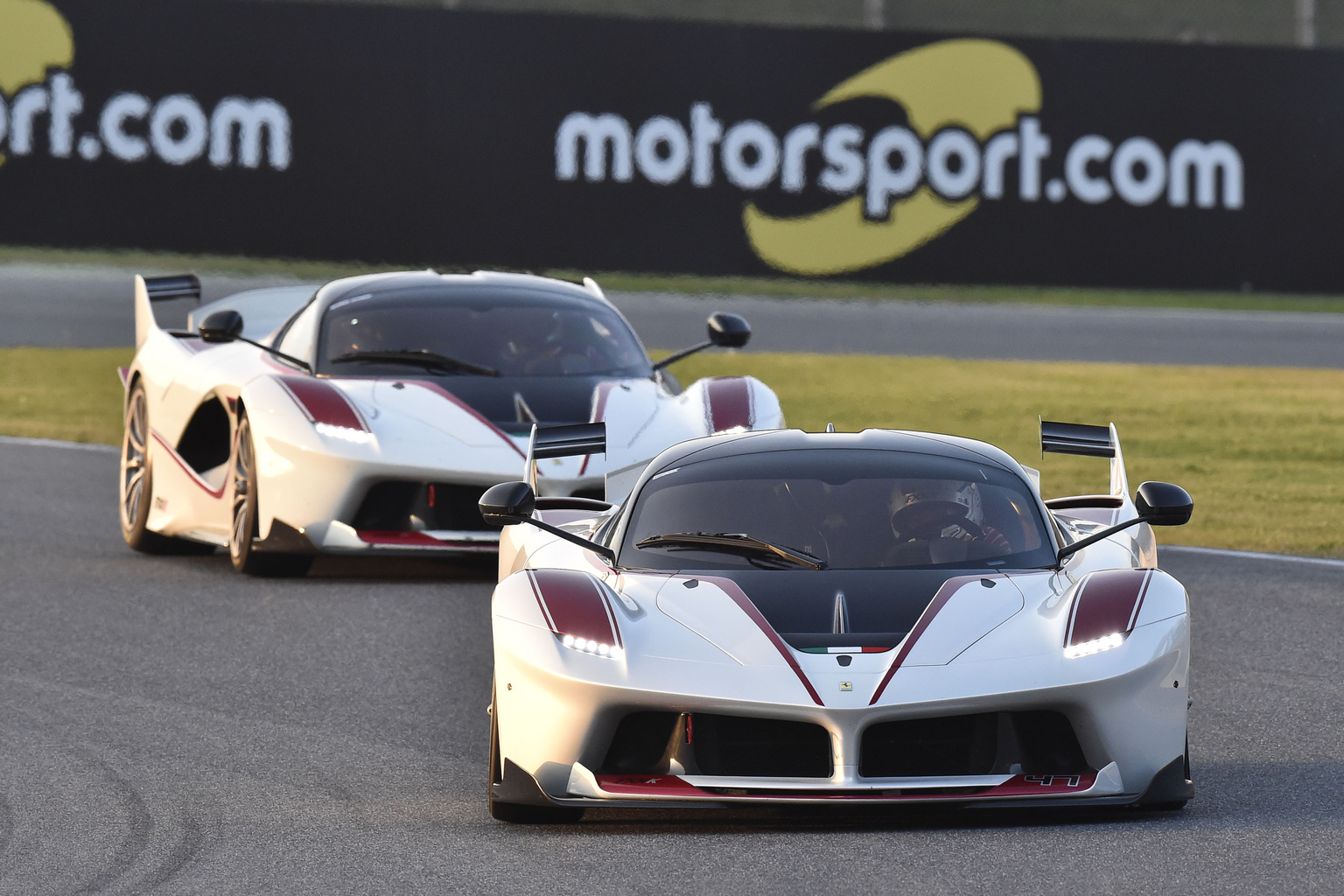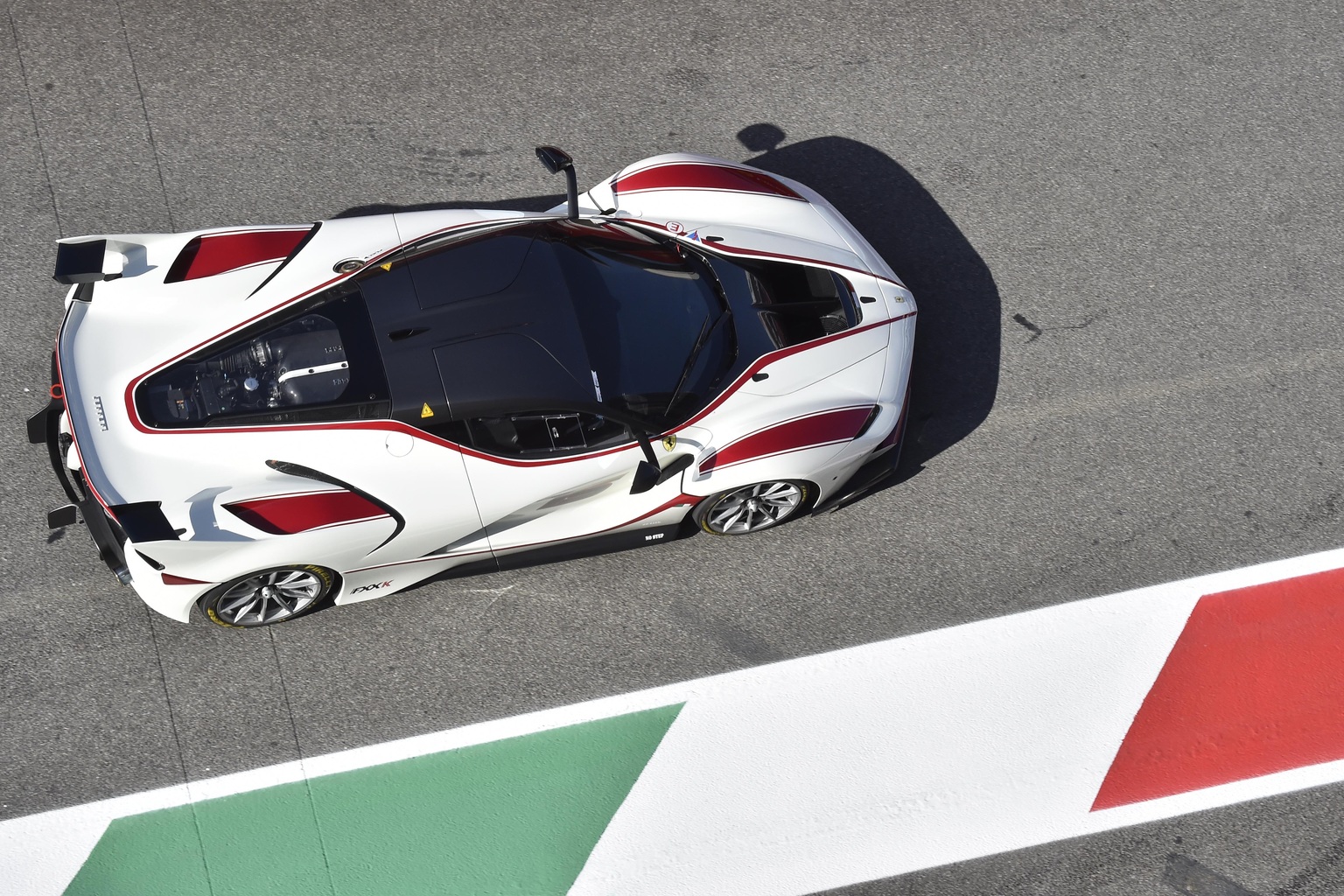Ferrari FXX-K
The Ultimate Track-Only Ferrari
Launched in 2015, the Ferrari FXX-K was the latest addition to Ferrari’s prestigious XX Program, a series dedicated to track-focused, limited-edition cars intended for Ferrari’s most devoted customers. Building upon the LaFerrari platform, the FXX-K was designed exclusively for track use and was never homologated for road driving or official racing. The “K” in its name refers to the kinetic energy recovery system (KERS) technology it employs, derived from Ferrari’s experience in Formula 1. With a total production run of just 40 units, the FXX-K is among the rarest and most technologically advanced cars Ferrari has ever produced.
Origins: The XX Program and Development Philosophy
The FXX-K is part of Ferrari’s renowned XX Program, which began with the Enzo-based Ferrari FXX in 2005 and continued with the 599XX. The XX Program is an exclusive research and development initiative that allows Ferrari’s top customers to drive and test experimental models on closed circuits. Through this program, Ferrari collects valuable data and driver feedback to refine and develop its future road and race cars.
As the ultimate evolution of the LaFerrari, the FXX-K was engineered to push performance to the maximum by stripping away all regulatory constraints. Ferrari’s engineers and test drivers worked tirelessly to optimize aerodynamics, enhance hybrid power delivery, and improve overall handling, creating a car that exemplified Ferrari’s track prowess and technical expertise.
Design: Aerodynamics and Aggressive Styling
From the outset, the Ferrari FXX-K was designed to look as fast as it performs. Every line, vent, and curve of the car’s bodywork serves an aerodynamic function, designed to maximize downforce, reduce drag, and stabilize the car at extreme speeds. Compared to the LaFerrari, the FXX-K has an entirely reworked aerodynamic package, including a large rear spoiler with a central vertical fin, twin-profile fixed rear wings, and an aggressive front splitter.
These additions, combined with a redesigned underbody, create unprecedented levels of downforce. Ferrari claims the FXX-K can generate 50% more downforce in “low drag” mode and 30% more in “high downforce” mode compared to the LaFerrari. This aerodynamic efficiency allows the FXX-K to grip the track with incredible force, making it capable of handling corners at breakneck speeds.
Powertrain: A Hybrid Beast with Unparalleled Power
The heart of the Ferrari FXX-K is a 6.3-liter V12 engine paired with a sophisticated electric motor, combining to produce a staggering 1,036 horsepower and over 900 Nm of torque. This powertrain setup takes Ferrari’s KERS technology from F1 and adapts it for use in a production-based hypercar. The V12 alone produces 848 horsepower, while the electric motor contributes an additional 188 horsepower. This instant electric torque enhances throttle response and provides a burst of acceleration, making the FXX-K one of the most powerful Ferraris ever built.
Ferrari developed four performance modes for the FXX-K’s hybrid system:
- Qualify Mode: Delivers maximum performance for a limited number of laps, tapping into the full power of the V12 and electric motor.
- Long Run Mode: Balances performance and efficiency, extending battery life for longer sessions on track.
- Manual Boost: Instantly releases maximum torque from the electric motor, providing a significant surge of acceleration.
- Fast Charge: Focuses on recharging the battery as quickly as possible.
This range of modes allows drivers to tailor the FXX-K’s performance to suit their driving style and track conditions, enabling an unprecedented level of customization for a track car.
Chassis and Suspension: Built for Precision
The FXX-K’s suspension and chassis were tuned to handle the extreme power and performance that Ferrari envisioned for this track car. The suspension is fully adjustable, with Ferrari’s advanced magnetorheological dampers and specially designed springs ensuring maximum grip and stability. The car’s stability control, traction control, and ABS were all re-engineered to allow more driver input while still providing a safety net.
Ferrari also equipped the FXX-K with a new set of Pirelli P Zero slick tires, specifically developed to handle the car’s power and performance on the track. Paired with the FXX-K’s robust Brembo carbon-ceramic brakes, this tire setup allows the car to achieve incredible stopping power and grip on the circuit. Ferrari’s Side Slip Control (SSC) system is also present, offering drivers enhanced handling and control by managing traction while allowing some degree of sliding—ideal for maximizing performance through tight turns.
Interior: Stripped for Purpose
The FXX-K’s interior is designed with a singular focus: driver engagement. Everything about the cockpit reflects the car’s track-only nature, from the minimalist dashboard to the bucket racing seats with multi-point harnesses. The steering wheel features an array of controls and settings, giving drivers quick access to all key systems without taking their hands off the wheel. A digital display mounted behind the wheel provides real-time data on speed, power distribution, lap times, and more, enabling drivers to stay informed and engaged during every lap.
All unnecessary weight and materials were removed from the interior to achieve a lean, race-ready setup, allowing the driver to focus on one thing: driving at the limit.
Performance on the Track: A Driving Experience Like No Other
Driving the Ferrari FXX-K is described by participants in Ferrari’s XX Program as an experience that goes beyond the capabilities of any road car. With over 1,000 horsepower at their disposal and state-of-the-art aerodynamics, FXX-K drivers can achieve levels of acceleration and cornering grip that surpass those of the LaFerrari. In “Qualify Mode,” the FXX-K unleashes its full potential, delivering an experience akin to piloting a race car.
The car’s handling characteristics are defined by its incredible grip and responsiveness, allowing drivers to take corners with precision and confidence. The electric motor fills in the gaps in power delivery, providing instantaneous torque and making acceleration seamless. The FXX-K’s advanced control systems, including the SSC and the electronically adjustable suspension, offer the driver the freedom to experiment with its capabilities on a track.
The XX Program: Exclusive Access and Events
Owning an FXX-K means joining Ferrari’s XX Program, a unique ownership experience that gives drivers the opportunity to test and drive their car at Ferrari-organized track events worldwide. These events allow FXX-K owners to test the limits of their cars in a controlled environment, with the support of Ferrari’s engineers and mechanics. Ferrari collects data from these sessions to refine the FXX-K’s performance and incorporate the findings into future road and race cars.
As part of the XX Program, owners do not take their FXX-K home; instead, Ferrari stores and maintains each vehicle, ensuring it’s always in peak condition for the next event. This unique arrangement allows Ferrari to maintain control over the cars while giving owners an exclusive driving experience.
Collectibility and Market Value
With only 40 units ever produced, the Ferrari FXX-K is one of the most exclusive Ferraris in existence, making it highly sought after by collectors and Ferrari enthusiasts alike. As a result, the FXX-K commands a premium in the resale market, and its values have continued to appreciate. Owning an FXX-K is more than owning a car; it’s joining an elite club with exclusive access to Ferrari’s world of high-performance engineering and track events.
Legacy and Influence on Ferrari’s Future Models
The Ferrari FXX-K has left a lasting mark on Ferrari’s design and engineering philosophy. The innovations in hybrid technology, aerodynamics, and performance data gathered from the FXX-K have influenced the development of subsequent Ferrari models, including the SF90 Stradale and the 296 GTB. As Ferrari continues to explore hybrid and electric powertrains, the FXX-K’s legacy will remain a guiding force in Ferrari’s evolution, bridging the gap between traditional combustion engines and the future of high-performance hybrid technology.
Ferrari FXX-K Press Release
Maranello, 2 December 2014 – Ferrari’s new FXX K research and development program receives its world premiere next weekend at the Yas Marina Circuit in Abu Dhabi. The laboratory-car is based on Maranello’s first hybrid model and will grace the world’s tracks from next year onwards. The K in its moniker is a reference to the “KERS” kinetic energy recovery system it adopts in maximising its track performance.
Unfettered by homologation and racing regulations, the FXX K will never be used in competition. It was, in fact, developed to be completely uncompromising, incorporating technological innovations that will guarantee an unprecedented driving experience to the exclusive group of Client-Test Drivers with whom the Prancing Horse will roll out a test programme over the coming two years.
The car’s enormous potential is attested to by two significant figures: a total power output of 1050 cv (860 cv delivered by its conventional V12 engine and 190 by its electric motor) and maximum torque in excess of 900 Nm.
The FXX K’s 6262 cc V12 features new camshafts and a modified valve train with mechanical rather than hydraulic tappets. The intake manifolds have been redesigned and given a special type of polishing treatment. The exhaust system has been modified as its silencers have been eliminated.
The HY-KERS system has been evolved specifically for pure performance with the result that the driver can control the function logics from the specific 4-setting Manettino on the centre console: Qualify, for maximum performance within a limited number of laps; Long Run to optimise performance consistency; Manual Boost for instant maximum torque delivery; and Fast Charge, for a fast recharge of the car’s battery.
A focus on delivering maximum efficiency at every stage of every track lap has resulted in extensive but integrated work on the entire car body in terms of both active and passive aerodynamics.
The front of the car is dominated by a twin-profile spoiler and a larger splitter, which is 30 mm lower, with a gap in its centre. This design is an application of the concepts developed to improve aero balance in the GT category of the WEC, which Ferrari has won for three consecutive years. Two pairs of vertical elements, an endplate and, externally, a dive plane, together with vertical fins channel the air towards the car’s flanks, generating a longitudinal vortex that creates a localised depression. This in turn sucks the wake from the wheels to the outside of the aerodynamic underbody. Along with the side skirts that extend out from the sills, the vortex helps isolate the airflow from the underbody to boost its efficiency.
The solutions on the rear of the car are highly sophisticated, too. The tail section is now higher and the mobile spoiler extends further for a total increase in extension of 60mm when fully deployed. A vertical fin and a small wing each side of the tail act as guide vanes in the low drag configuration and boost the spoiler’s efficiency in the high downforce one. This system also creates considerable downforce at the rear of the car, allowing the use of an extreme diffusion volume for the rear diffuser which optimises air extraction from the underbody. The section of the flat underbody just ahead of the rear wheels is also exploited to the full to generate downforce thanks to the reduced pressure in the wheel arch guaranteed by the direct connection to the rear of the car by a by-pass duct.
The result is a 50% improvement in downforce in the low drag configuration and a 30% improvement in the more aggressive downforce configuration, resulting in a figure of 540 kg at 200 km/h.
Vehicle dynamics are further improved by the adoption of Pirelli slicks complete with sensors that monitor longitudinal, lateral and radial acceleration, as well as temperature and pressure. This ensures an accurate analysis of the interaction between the tyre and track surface, providing even more vital data to enable the traction control system to guarantee maximum performance.
The intervention level of the E-Diff electronic differential, F-Trac traction control, Racing SSC (Side Slip Angle Control) – now specially calibrated to suit the car’s slick tyres – and the high-performance ABS can be controlled using the five-position Manettino on the steering wheel.
2015 Ferrari FXX K Gallery
Ferrari FXX K Videos
Specs & Performance
| type | Limited Production Car |
| built at | Italy |
| predeccesor | 2008 Ferrari FXX Evoluzione |
| engine | V12 |
| displacement | 6262 cc / 382.13 in³ |
| bore | 94 mm / 3.70 in |
| stroke | 75.2 mm / 2.96 in |
| compression | 13.5:1 |
| power | 641.3 kw / 860 bhp |
| specific output | 137.34 bhp per litre |
| torque | 900 nm / 663.8 ft lbs |
| redline | 9250 |
| front tires | 285/650 Pirelli P-Zero slicks |
| rear tires | 345/725 Pirelli P-Zero slicks |
| front brakes | Carbon Ceramic Discs |
| f brake size | 36 x 398 mm / 1.42 x 15.67 in |
| rear brakes | Carbon Ceramic Discs |
| r brake size | 34 x 380 mm / 1.34 x 14.96 in |
| f suspension | Double Wishbones |
| r suspension | Multi-Link |
| weight distro | 41 % / 59 % |
| wheelbase | 2650 mm / 104.3 in |
| length | 4896 mm / 192.8 in |
| width | 2051 mm / 80.7 in |
| height | 1116 mm / 43.9 in |
| transmission | 7-Speed DCT |
| emission | 330 g/km |


